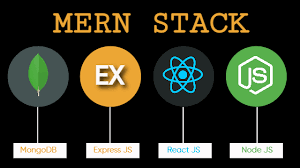The Mean Stack: A Modern Approach to Web Development
Introduction
The Mean stack, an acronym for MongoDB, Express.js, Angular, and Node.js, has emerged as a popular choice for building modern web applications. This technology stack offers a cohesive and efficient development environment, leveraging JavaScript across the entire application. This white paper will explore the components of the Mean stack, its benefits, and key considerations for its implementation.
Understanding the Components
- MongoDB: A NoSQL database that stores data in flexible, document-oriented format. It is known for its scalability, performance, and ease of use.
- Express.js: A lightweight, flexible Node.js web application framework that provides a robust foundation for building server-side applications.
- Angular: A powerful front-end framework that facilitates the creation of dynamic, single-page applications (SPAs). It offers features like component-based architecture, dependency injection, and two-way data binding.
- Node.js: A JavaScript runtime environment that allows developers to execute JavaScript code outside of a web browser. It offers high performance, event-driven architecture, and scalability.
Benefits of the Mean Stack
- Full-stack JavaScript: The use of JavaScript throughout the entire stack simplifies development and reduces learning curves.
- Scalability: The Mean stack is well-suited for handling increasing traffic and data volumes due to its flexible architecture.
- Community and Ecosystem: A large and active community provides abundant resources, libraries, and support for Mean stack developers.
- Productivity: The integrated tools and libraries within the Mean stack streamline development processes and improve efficiency.
- Flexibility: The stack is adaptable to various project requirements and can be customized to fit specific needs.
Key Considerations
- Learning Curve: While the Mean stack offers many benefits, it may require a significant learning curve for developers who are new to JavaScript or specific components within the stack.
- Performance Optimization: Careful attention to performance optimization is essential, especially for large-scale applications, to ensure optimal user experience.
- Project Suitability: The Mean stack is best suited for projects that require a full-stack JavaScript solution and can benefit from the advantages of a NoSQL database.
Common Use Cases
- Real-time applications: Chat applications, online gaming, and collaborative tools.
- Single-page applications (SPAs): Web applications that load a single HTML page and dynamically update content.
- RESTful APIs: Building backend services for mobile apps and other clients.
- Enterprise applications: Complex web applications with large datasets and high traffic.
Conclusion
The Mean stack has become a popular choice for web development due to its powerful components, benefits, and versatility. By understanding the components, advantages, and key considerations, developers can effectively leverage the Mean stack to build scalable, efficient, and modern web applications.
References
- Mean.io: https://angular.dev/
- Node.js Official Website: https://www.mongodb.com/
- Express.js Official Website:



